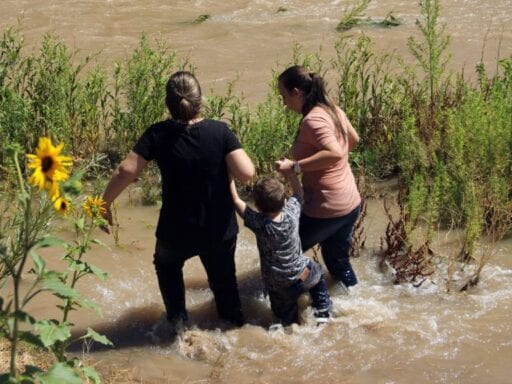It’s an expansion of the “Remain in Mexico” program.
The Trump administration announced Wednesday that it is sending Brazilian migrants arriving at the southern border back to Mexico to wait for decisions on their asylum applications in the US.
It’s part of the Department of Homeland Security’s efforts to expand the “Remain in Mexico” program, officially known as the Migrant Protection Protocols, under which the administration has already sent some 60,000 asylum seekers to Mexico to wait for their court dates in the US, often for months at a time.
Trump administration officials have touted the program as one of the primary drivers of the approximately 75 percent decline in apprehensions at the southern border since last May. But the Trump administration acknowledges that there remains a humanitarian crisis along the border — one that immigrant advocates say has only been exacerbated by MPP.
Until recently, most immigrant advocates had thought that only Spanish-speaking migrants would be subject to MPP. But the Department of Homeland Security clarified in a statement Wednesday that there is no such limit on the program. Indeed, citizens of Trinidad and Tobago and Albania have also been sent back to Mexico under MPP in addition to Brazilians, according to Mexico’s National Institute of Migration.
The rationale behind sending only Spanish speaking-populations to Mexico for prolonged periods is that they would be better able to assimilate in local society and find work. Brazilians who only speak Portuguese, by contrast, will face additional economic hardship, threats to their personal safety and difficulty securing legal representation.
It’s not clear at this point how many Brazilians have been sent back to Mexico under MPP. Some have been returned to Ciudad Juárez, which is right across the border from El Paso, Texas. Like other migrants who have been sent back to Mexico under MPP, they face the dangers of extortion, rape and kidnapping at the hands of drug cartels and other criminal actors.
“Their vulnerability to kidnapping is greater [because] of their lack of Spanish skills,” Taylor Levy, one of the few immigration attorneys representing migrants affected by MPP, tweeted Wednesday.
Levy said that she did not know of any attorneys in the Ciudad Juárez area who speak Portuguese. It’s unclear whether either the US or Mexican government will provide translators to Brazilians.
The number of Brazilians arrested by US Customs and Border Protection spiked last year to around 18,000, up from just 1,600 the year before. The catalyst may have been the 2018 election of Brazil’s far-right President Jair Bolsonaro, whose tenure has been characterized by high unemployment, a series of corruption scandals and increased crime.
DHS touted the decision to expand MPP to Brazilians on Wednesday as a means of discouraging unauthorized immigration.
“The fact that Brazilians are now part of the program shows that the Department, along with its Mexican counterparts, have always sought to expand the program in a safe and responsible manner,” DHS said in a statement.
Before MPP, both those who waited in line at the border and those who were apprehended between ports of entry would have been held at a US Customs and Border Protection processing facility until a border agent determined whether they should be released, transferred to immigration detention, or deported. But now, they are mostly sent back to Mexico and have only been allowed to enter the US to attend their immigration court hearings.
They have been waiting in Mexican border cities where some migrants are lucky to find housing in shelters, hotels, or rooms for rent. But for more than 5,000 others, only colorful tents and tarps, some held up by only sticks and stones, stand between them and the elements, even as temperatures drop below freezing. The encampments are clustered around bridges linked to US ports of entry along the Rio Grande, where they rely on volunteers for basic necessities like clean drinking water and warm clothes.
Author: Nicole Narea
Read More



